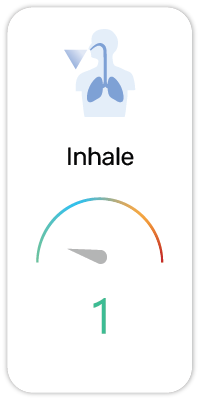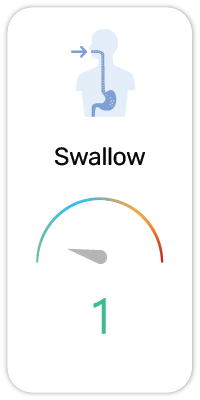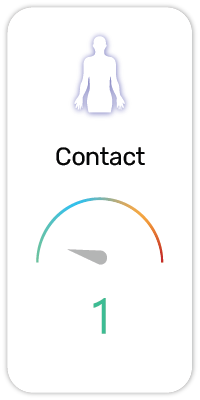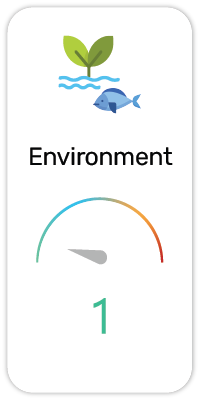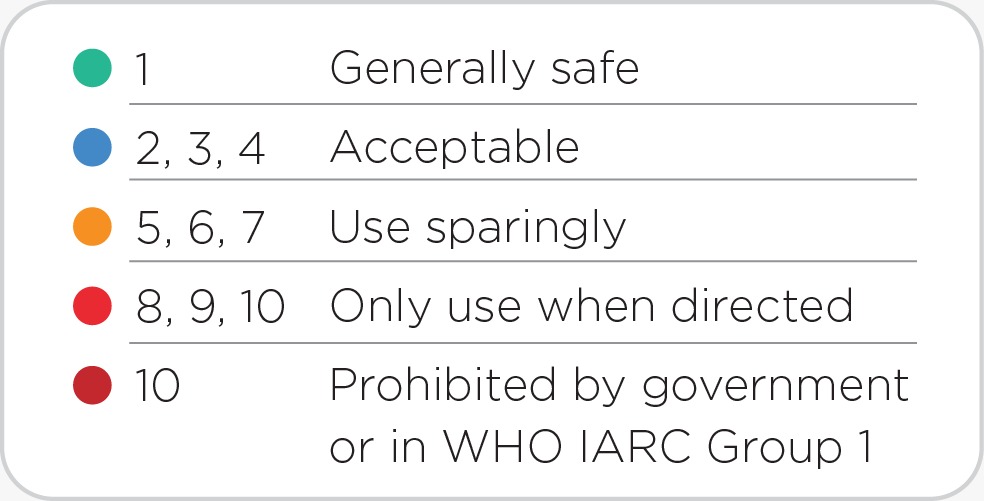Lecithin(in 26,300 products)
Potential Risk Index®:
About:
Functions:
1. Antioxidant - Reduces oxidation to prevent the formation of free radicals which may be harmful to health.
2. Antistatic Agent - Reduces or eliminates the build up of static electricity.
3. Binder / Stabilizer - Retains the physical characteristics of food/cosmetics and ensure the mixture remains in an even state.
4. Dietary / Nutritional Supplement - Vitamins, minerals, proteins, fatty acids or probiotics that improves nutritional intake
5. Emollient - Softens and soothes the skin. Helps with skin conditioning.
6. Emulsifier - Allows water and oils to remain mixed together to form an emulsion.
7. Flavor / Flavoring / Flavor Enhancer - Provides or enhances a particular taste or smell.
8. Gelling Agent / Thickener - Increases the viscosity by thickening the liquid to give it more texture
9. Lubricant - Prevents or reduces friction
10. Occlusive (Cosmetics) - Forms a protective layer to retain skin hydration
11. Surfactant - Reduces the surface tension to allow mixtures to be formed evenly. Emulsifier is a specific type of surfactant which allows two liquids to mix together evenly
Lecithin is a natural substance that is commonly used in both cosmetics and personal care products, as well as in the food industry. It is a type of phospholipid that is found in many different plant and animal sources, including soybeans, eggs, and sunflowers.
In cosmetics, lecithin is often used as an emulsifier, which helps to keep water and oil-based ingredients from separating. It is also used as a moisturizer, and can help to improve the texture and feel of skin care products. Lecithin can be found in a variety of products, including lotions, creams, and hair care products.
In the food industry, lecithin is used as an emulsifier, as well as a stabilizer and thickener. It can be found in a wide range of products, including baked goods, chocolate, and margarine. Lecithin is also used in some dietary supplements, as it is believed to have a number of health benefits.
One of the key benefits of lecithin is that it is a source of choline, which is an essential nutrient that plays a role in brain and liver function. While lecithin is generally considered safe for use in cosmetics and food products, some individuals may experience allergic reactions or other side effects.
It is approved to use as food additive in EU and generally recognized as safe food substance in US.
Recent Findings:
Fun Facts:
-Lecithin is a mixture of glycerophospholipids, which are glycerol-based phospholipids. Phospholipids are amphiphilic in nature where it consists of a hydrophobic (water-avoiding) fatty acid "tails" and hydrophilic (water-loving) phosphate "head"
-Mainly extracted from soybean oil and it is also rich in omega-3 and omega-6 fatty acids
-Is a source of choline where it is needed for nerve and muscle development
Scientific References:
Regulatory References:
1. US FDA Food Additives Status List [2018]
2. EU Approved Food Additive [2018]
- E322
3. Japan’s List of Designated Food Additives under Article 10 of the Food Sanitation Act
- Sunflower Lecithin
4. Canada List of Permitted Food Additives
- List 8 - Lecithin
5. US FDA Generally Recognized As Safe (GRAS) Food Substances (21 CFR 184) [2017]
- § 184.1063 - Enzyme-modified lecithin, § 184.1400 - Lecithin
User Comments:
Submit


